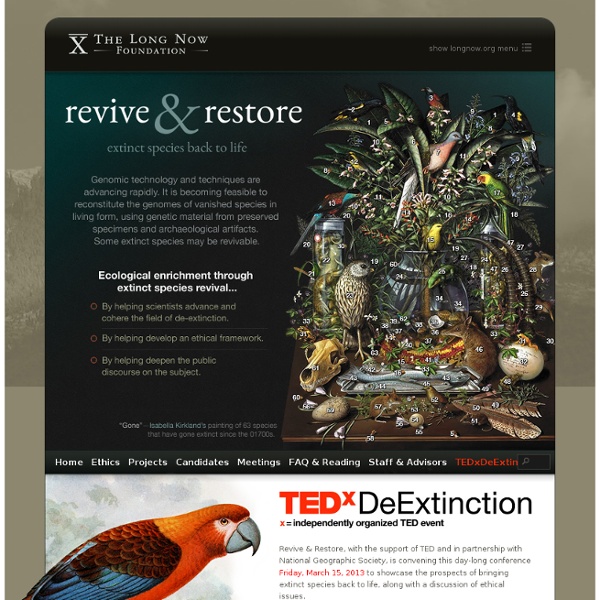CRISPR: A game-changing genetic engineering technique – Science in the News
Have you heard? A revolution has seized the scientific community. Within only a few years, research labs worldwide have adopted a new technology that facilitates making specific changes in the DNA of humans, other animals, and plants. Compared to previous techniques for modifying DNA, this new approach is much faster and easier. This technology is referred to as “CRISPR,” and it has changed not only the way basic research is conducted, but also the way we can now think about treating diseases [1,2]. What is CRISPR CRISPR is an acronym for Clustered Regularly Interspaced Short Palindromic Repeat. How does it work? Figure 1 ~ The steps of CRISPR-mediated immunity. Interspersed between the short DNA repeats of bacterial CRISPRs are similarly short variable sequences called spacers (FIGURE 1). The CRISPR immune system works to protect bacteria from repeated viral attack via three basic steps [5]: What are some applications of the CRISPR system? In Industry In the Lab In Medicine References: 1. 2.
Video inpainting software deletes people from HD video footage
In a development sure to send conspiracy theorists into a tizzy, researchers at the Max Planck Institute for Informatics (MPII) have developed video inpainting software that can effectively delete people or objects from high-definition footage. The software analyzes each video frame and calculates what pixels should replace a moving area that has been marked for removal. In a world first, the software can compensate for multiple people overlapped by the unwanted element, even if they are walking towards (or away from) the camera. See the incredible video demonstration after the break. View all The software was developed by a team led by Prof. The software was inspired by shift maps – which take a portion of footage from one moment in time and move it to another moment in time to fill in the occluded area. A comparison showing how the newly developed method improves over an earlier approach Source: Max Planck Institute for Informatics
A method for positive forensic identification of samples from extremely low-coverage sequence data | BMC Genomics | Full Text
Two loci are in linkage disequilibrium (LD) if their alleles are not randomly associated [23]. As the name implies, LD can occur because alleles that are physically linked and nearby on chromosomes are often co-inherited. This non-random association implies that observing the allelic state of one locus provides some information about the state of the other. Our approach is based on the idea that observations of alleles made in one sample consistently provide information about the allelic state in another sample via LD if and only if the samples are from the same individual (or from a genetically identical individual, i.e., a monozygotic twin). Consider a pair of SNP loci in physical proximity on the same chromosome in linkage disequilibrium (Fig. 1). To estimate these probabilities, we model allele and haplotype frequencies in an approach similar to the one employed by Rodriguez et al. in the identity by descent detection method Parente2 [24].
Fabry–Pérot interferometer
Etalons are widely used in telecommunications, lasers and spectroscopy to control and measure the wavelengths of light. Recent advances in fabrication technique allow the creation of very precise tunable Fabry–Pérot interferometers. Basic description[edit] Fabry–Pérot interferometer, using a pair of partially reflective, slightly wedged optical flats. The heart of the Fabry–Pérot interferometer is a pair of partially reflective glass optical flats spaced millimeters to centimeters apart, with the reflective surfaces facing each other. In a typical system, illumination is provided by a diffuse source set at the focal plane of a collimating lens. Applications[edit] A picture of the solar corona taken with the LASCO C1 coronagraph which employed a tunable Fabry–Pérot interferometer to recover scans of the solar corona at a number of wavelengths near the FeXIV green line at 5308 Å. A commercial Fabry-Perot device Theory[edit] A Fabry–Pérot etalon. where is the coefficient of finesse. . . Defining
Biologie moléculaire
Génie-génétique et biotechnologies Schémas bilan Bibliographie CAMPBELL N. Netographie
Measuring carbon dioxide emissions with a portable spectrometer
18 February 2013, SPIE Newsroom. DOI: 10.1117/2.1201301.004659 Carbon dioxide (CO2) is the most important anthropogenic greenhouse gas influencing global warming. To determine its major source and sink regions, precise and worldwide measurements of the CO2 mixing ratio (xCO2) are required.1 To obtain xCO2 values that are averaged for the whole atmospheric column (the total volume of air over a certain area), the solar spectrum needs to be measured in the near-IR region both on the earth's surface at a monitoring site and from space, with a satellite such as the Greenhouse Gases Observing Satellite (GOSAT). Earth surface monitoring points are concentrated in the mid-latitudes of the northern hemisphere (i.e., where most developed countries are situated). Figure 1. Our new spectrometer uses commercially available fiber optics and a fiber Fabry-Perot interferometer (FPI), that controls and measures light wavelengths. Figure 2. Masahiro Kawasaki Kyoto, Japan Masafumi Ohashi Kagoshima, Japan 2.
SDSS



